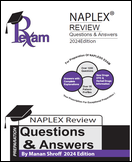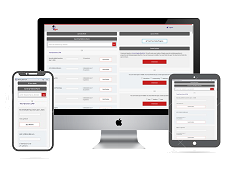
Which of the following drugs interacts with Invokana (Canagliflozin)? [SELECT All THAT APPLY]
a. Digoxin
b. Rifampin
c. Ketoconazole
d. Trazodone
e. Tramadol
Which of the following drugs interacts with Invokana (Canagliflozin)? [SELECT All THAT APPLY]
a. Digoxin
b. Rifampin
c. Ketoconazole
d. Trazodone
e. Tramadol
Answer: (a and b). Co-administration of Canagliflozin with rifampin, a nonselective inducer of several UGT enzymes, including UGT1A9, UGT2B4, decreased Canagliflozin area under the curve (AUC) by 51%. This decrease in exposure to Canagliflozin may decrease efficacy.
If an inducer of these UGTs (e.g., rifampin, phenytoin, phenobarbital, ritonavir) must be co-administered with Invokana (Canagliflozin) (Canagliflozin), consider increasing the dose to 300 mg once daily if patients are currently tolerating Invokana (Canagliflozin) 100 mg once daily, have an eGFR greater than 60 mL/min/1.73 m2, and require additional glycemic control.
Consider other antihyperglycemic therapy in patients with an eGFR of 45 to less than 60 mL/min/1.73 m2 receiving concurrent therapy with a UGT inducer and require additional glycemic control.
There was an increase in the AUC and mean peak drug concentration (Cmax) of digoxin (20% and 36%, respectively) when co-administered with Invokana (Canagliflozin) 300 mg. Patients taking Invokana (Canagliflozin) with concomitant digoxin should be monitored appropriately.
Try our Naplex QBank. www.pharmacyexam.com **Please note: This type of question will not show up in an MPJE. We are just posting to MPJE group for knowledge.



